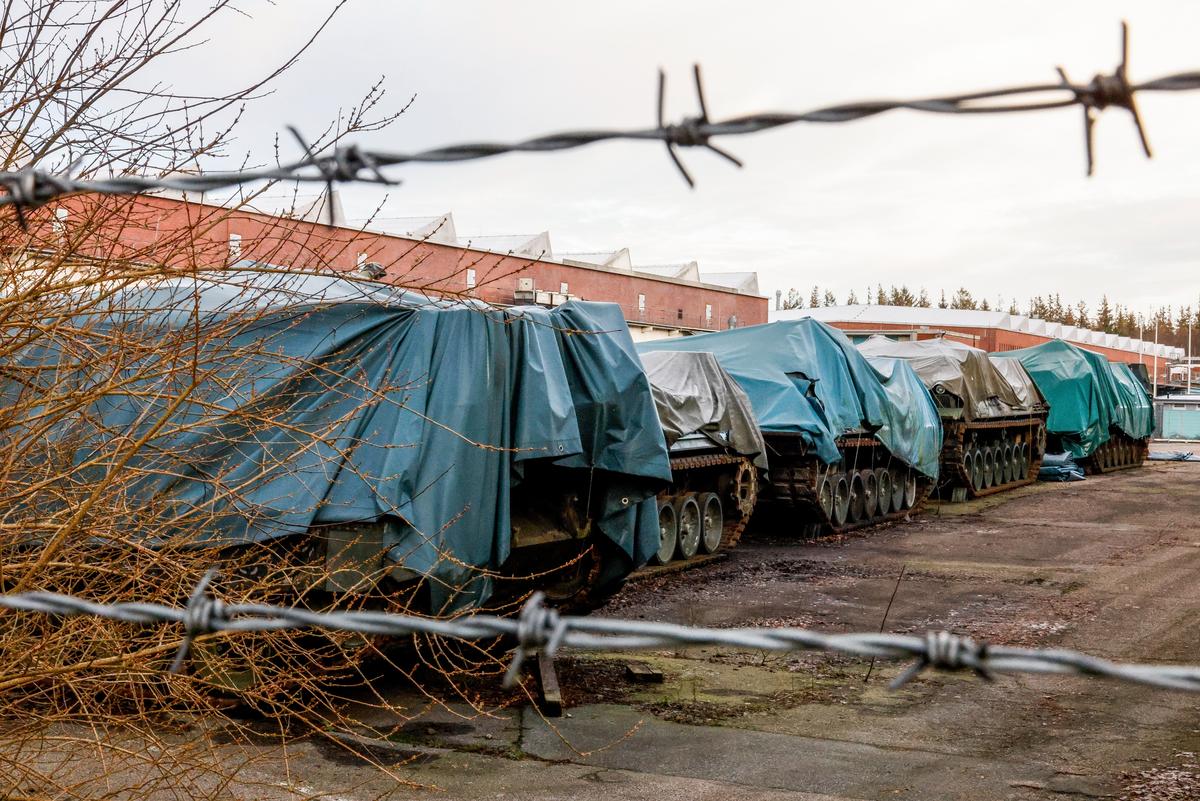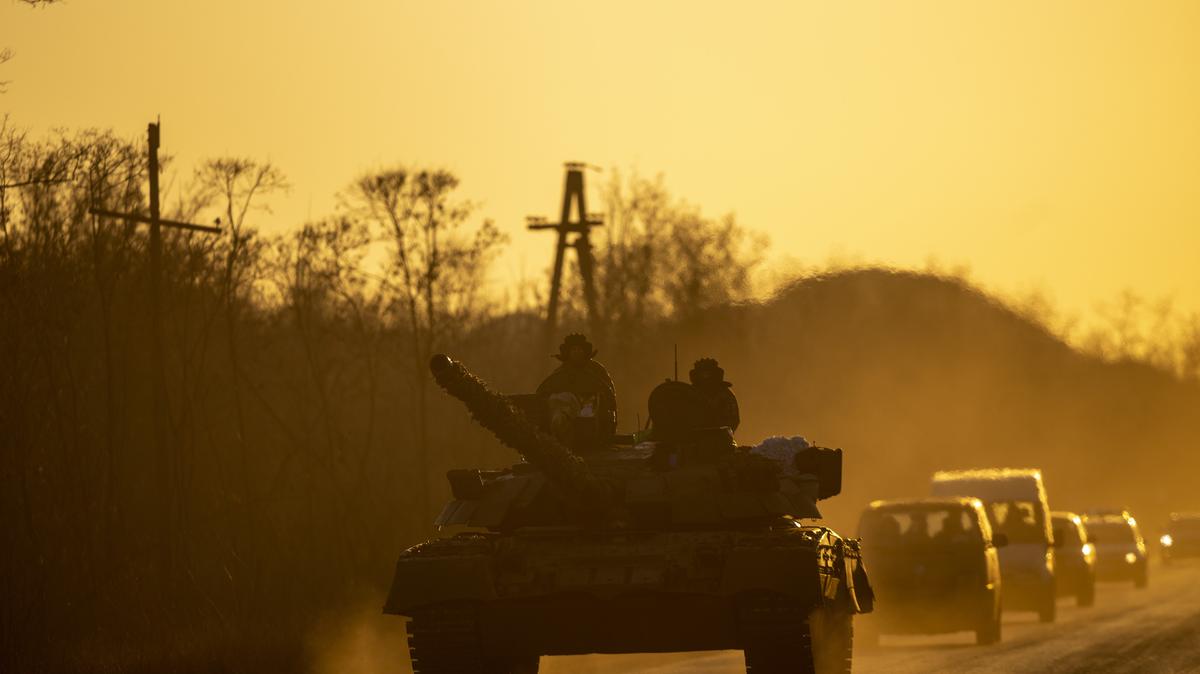In this article, we will proceed with the assumption that certain “consultations” of US officials with Putin on the possibility of a ceasefire did in fact take place, just like your humble servant and Neue Zurcher Zeitung previously reported.
One of the obvious signs of these “consultations” having taken place is also indicated by military expert, Ukraine’s Armed Forces pilot, and reserve colonel Roman Svitan. He notes that American aid to Ukraine suddenly plummeted in November-December, and the newer assistance packages usually included ammunition for the weaponry Ukraine already possessed and light equipment.
Rumour has it that Putin was offered to “keep” the parts of Donbas and the Luhansk region he currently controls in exchange for withdrawing from the Zaporizhzhia and Kherson regions and agreeing to determine the fate of Donbas and the Luhansk region within the next 5-6 years. Crimea’s fate would be decided within the next 15. Basically, a new Minsk Agreement, “Minsk-3”.
In response, Putin demanded he be given all of Donbas and the Luhansk region. That was a crazy reaction. The thing is that the parts of the Zaporizhzhia and Kherson regions currently controlled by the Russian army are the so-called “land corridor” to Crimea; strategically, the corridor is doomed. Meanwhile, the parts of Donbas and the Luhansk region not controlled by Putin are precisely the territories being secured by three powerful lines of defence, built over the last eight years, that Putin has been trying to storm over the past year unsuccessfully. Thus, Putin asked to exchange nothing for something: the territories he will not be able to keep for the territories he has been failing to capture for a year.
No matter what these “consultations” entailed — a cunning move aimed at trapping Putin, an initiative shown by CIA Director William J. Burns and US National Security Advisor Jake Sullivan (Russian political scientist Andrey Piontkovsky seems to think so), a way of testing out the waters, or something else entirely — they showcased the Russian president’s lack of sense.
Because of his refusal to negotiate, Putin had to:
- replace Surovikin, commander of the Ukraine invasion force, with Gerasimov. Surovikin belonged to a sane faction of the General Staff that was advising going on the defence. Meanwhile, Gerasimov is part of the faction that thinks any order from above should be carried out, even if it contradicts laws of gravity and common sense;
- place air defence systems in Moscow and other Russian cities to cover the Kremlin and his other residencies;
- start an offensive in Donbas;
- schedule his long-postponed address to the Russian parliament on 21 February.
We can name three goals of an offensive in Donbas.
- To make Ukraine’s Armed Forces deploy their reserves, which Ukraine is currently preparing deep within its territory for a future offensive, to Donbas and “burn them down” there.
- To capture Donbas and the Luhansk region in their entirety and go back to the negotiation table with a new set of rules: see, we did it, now let us come to an agreement.
- To have at least something to show for his actions at the 21 February address — excluding the nonsense of charlatans on TV.

The bridge destroyed by Russian troops on the road from the city of Kostyantynivka to the city of Bakhmut, 10 February 2023. Photo: Marek M. Berezowski / Anadolu Agency / Getty Images
Judging by how the offensive is going, these goals, excluding the last one, are not feasible. Russian forces still attack the same way the Red Army did in 1944. A wall of fire followed by cannon fodder.
As we know, a commander’s merits shine not through their victories but through the decisiveness with which they keep throwing new soldiers in the furnace of war.
This is exactly what happened near the town of Vuhledar, where Russian commanders hurled armoured columns into attack along the roads which have become an easy target for Ukraine’s artillery a while ago. The columns were burnt down, soldiers started to flee, running through mined fields. The Russian command continued sending more and more columns. Even Z-Telegram channels, not to mention former Russian commander Igor Strelkov, critiqued these decisions harshly. This was probably the first time this year when an offensive followed the script for Purgatory: soldiers on fire (the cheap Russian uniforms catch fire easily), jumping out of tanks, while armoured personnel carriers are running over their own fellow soldiers.
I will emphasise once again that these are not tactical errors — this is the modus operandi of the Russian army, in which a commander’s success still depends not on whether a victory was achieved, but on the number of soldiers killed on the battlefield. It is even more important to understand that Putin lacks the resources needed for this modus operandi. In the 21st century, one cannot fight a war with a 20th century army — the reason being the same as to why one could not fight a war using Roman legions in the 19th century.
The “wall of fire” does not work against HIMARS systems that are able to blow up all depots in the 70 km range from the front line. Putin will simply not be able to provide the necessary troop and armoured vehicle density.
Let us recall that Putin gathered about 200,000 more-or-less trained contract servicemen for the offensive on Ukraine in 2022 — against the 60,000 trained soldiers Ukraine’s Armed Forces had back then. This is a normal ratio when it comes to an offensive — one to three.
Currently, Ukraine can count on about 500,000 people at the front line. This means that Putin needs at least 1.5 million people at the front simultaneously. He just does not have the numbers.
Mobilisation gave him around 250,000 soldiers, some of which were sent to slaughter immediately without any training, while some underwent training and are currently being deployed to the front. Mobilisation stopped at 250,000 people not because Putin felt empathy towards Russians. But because this is the maximum turnaround Russian training grounds can withstand. Putin lacks instructors, training grounds, food, and uniforms needed to simultaneously train 1.5 million soldiers — even now, used bulletproof vests are being given out at the front. But if you train 250,000 soldiers at a time, then there is no opportunity to create a cannon fodder tsunami. You will create exactly what we are currently seeing near Vuhledar and Bakhmut.
Furthermore, the more people get drafted, the more Russians will realise this war is not just happening on their TV screens. The de-virtualisation process will begin. A war in which generals send people straight to death in droves, hungry and without a dime, is not the “heroic defence against NATO with the use of the Wunderwaffe” that TV keeps promoting. In the battle between the TV set and the fridge, the former does gain the upper hand. But even TV is bested by a refrigerated morgue truck.
Putin’s offensive on Donbas is strategically doomed. He could advance 10-20 km for the price of dozens of thousands of lives. He could take Bakhmut to have something to talk about on 21 February. He could continue the offensive for a month, two, three, ten. It does not matter.
The main task for Ukraine’s troops in this offensive — and they know it very well — is not to waste their reserves and crush as many Russian soldiers as possible.
Because alongside Putin’s offensive, another process, an absolutely catastrophic one for Putin, is occurring. You cannot even call it the Ukrainian forces’ preparation for an offensive. It would be more correct to call it the restructuring of Ukraine’s Armed Forces.
Having made sure that Putin cannot be reasoned with, the West changed its strategy and began flooding Ukraine with modern weaponry. After Putin’s refusal to negotiate, a smart iron rain started pouring in Ukraine’s direction: from tanks and GLSDB missiles to aircraft, the deliveries of which are also soon to come.

Leopard 1 tanks approved to be sent to Ukraine, on the territory of the Flensburger Fahrzeugbau Gesellschaft plant. Photo: Axel Heimken / picture alliance / Getty Images
And once again, the heart of the matter is not only the arms supply. The thing is that all of this weaponry, once it arrives and is integrated, will transform the Ukrainian forces into a 21st-century army.
In the middle of the 20th century, the Red Army advanced using a wall of fire and cannon fodder, and this method was not among the best even back then. At the end of the 20th century, the US-led coalition waged war in Iraq mainly from the sky. In 42 days, the coalition carried out 100,000 strikes, dropping 88,000 tonnes of bombs on the Iraqi military and civil infrastructure.
Ukraine’s forces will not receive the same weaponry: they will not get thousands or even hundreds of aircraft. But as military expert Yury Fedorov reminds us, they will be provided with better high-precision weapons, which within the framework of a modern, network-centric war will strike precisely against the concentration of enemy’s troops and equipment. This will allow Ukraine to get by without such large numbers of weaponry as the ones used against Iraq in 1991 and 2003.
One should not think that these weapons will start operating tomorrow. It could take months to integrate them. But once the integration is complete, it will turn out that it does not matter at all where Ukraine’s forces decide to attack at that exact moment and how many kilometres Putin has advanced on Donbas at the cost of lives of dozens of thousands of Russian soldiers.
The effect will be the same as if a modern tank battalion appeared at the Battle of Gaugamela, the decisive battle between Alexander the Great and Persian King Darius III. It does not matter where this battalion with appropriate support advances on the Macedonian phalanx — the results are obvious.
Judging by the arms supply and the fact that the Netherlands directly accused Putin of the MH17 plane crash, the West decided to give Ukraine an opportunity to win. Russia’s General Staff and the elites better come to this realisation as soon as possible.
Join us in rebuilding Novaya Gazeta Europe
The Russian government has banned independent media. We were forced to leave our country in order to keep doing our job, telling our readers about what is going on Russia, Ukraine and Europe.
We will continue fighting against warfare and dictatorship. We believe that freedom of speech is the most efficient antidote against tyranny. Support us financially to help us fight for peace and freedom.
By clicking the Support button, you agree to the processing of your personal data.
To cancel a regular donation, please write to [email protected]

